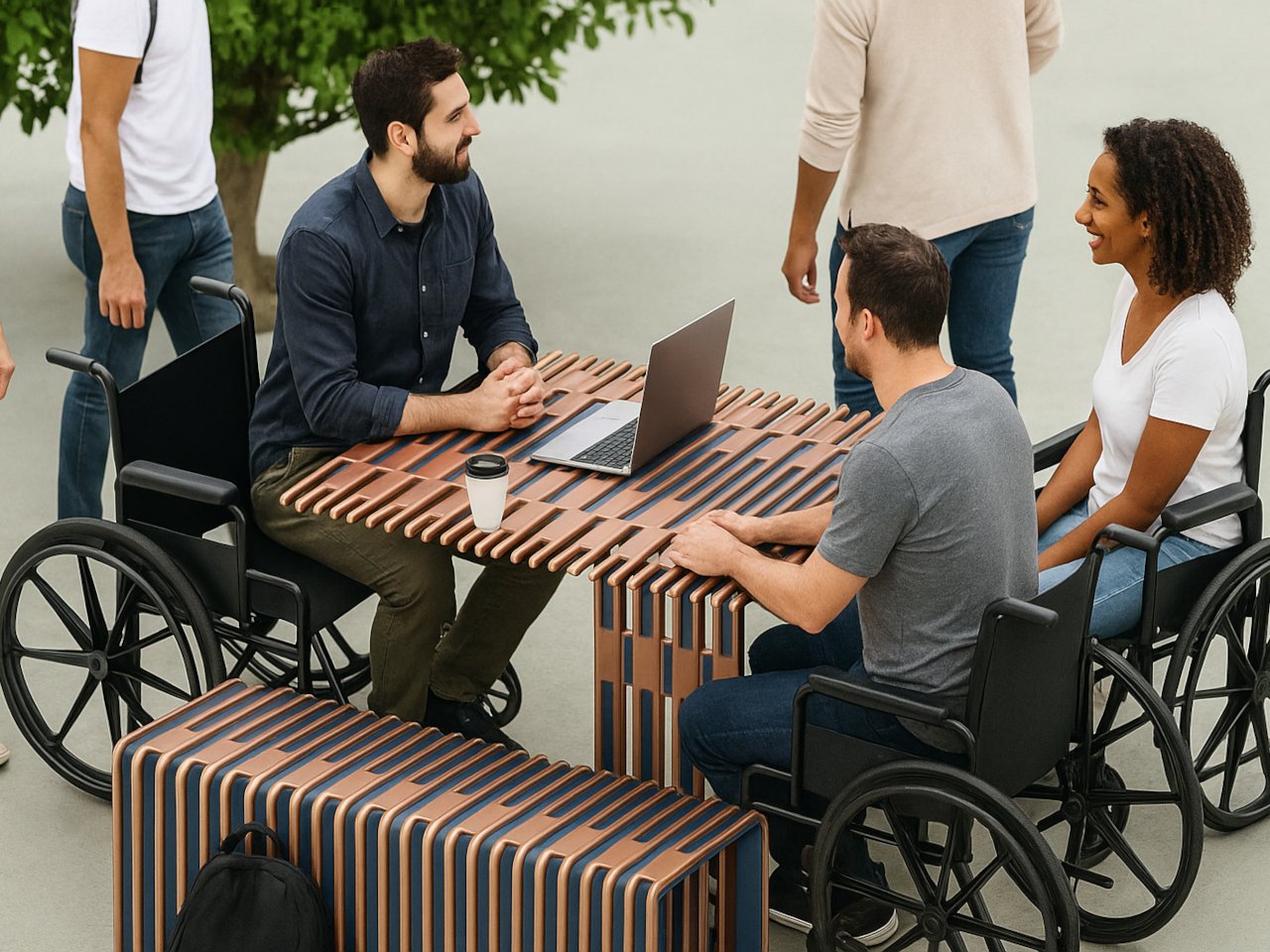Public seating has a problem. Walk through any city and you’ll find the same story repeated endlessly: benches and tables that work for some people while completely excluding others. The T ‘able urban furniture concept by Burcu Nehir Tüm tackles this head-on, reimagining what happens when we design for everyone from the start.
Most public furniture treats accessibility as an afterthought, creating what the designer calls “an exclusionary structure.” Fixed tables with uniform heights ignore individual differences. Even well-intentioned solutions often miss the mark, unintentionally creating separate spaces that stigmatize rather than include.
Designer: Burcu Nehir Tum
“Even systems designed with the intention of providing solutions can unintentionally generate a perception that limits and segregates users,” Tüm explains. This segregation restricts social participation, turning public spaces into divided territories rather than shared communities.
T ‘able flips this approach entirely by defining three distinct access zones instead of restrictive fixed seating. Wheelchair users can approach comfortably from multiple angles without being relegated to designated spots. The open design means everyone gathers at the same table, not separate ones.
The curved side forms serve dual purposes, providing structural support while functioning as practical hangers for bags and personal belongings. This thoughtful detail shows how inclusive design often benefits everyone, not just those with specific needs.
The modular construction uses bent sheet metal profiles and flat panels, creating visual coherence while allowing infinite configurations. Parks, plazas, campus quads, or transit hubs can all accommodate different arrangements based on specific needs and spatial constraints.
The slatted metal construction feels contemporary and approachable, with color options ranging from warm copper tones to cool blues. The rhythmic pattern creates visual lightness while maintaining structural integrity and weather resistance for outdoor use.
What makes T ‘able particularly powerful is how it supports genuine shared participation. Users can face each other naturally, collaborate on projects, or simply enjoy meals together without physical or social barriers dictating who sits where.
The design encourages the kind of spontaneous social interaction that makes cities feel alive. Instead of separating people by their mobility needs, it creates opportunities for connection across all differences.
Tüm’s philosophy extends beyond furniture to urban planning itself. “A city can only be considered truly developed if it enables an inclusive and equitable life where everyone has equal access,” she argues. This vision transforms accessibility from compliance checkbox to fundamental design principle.
The modular system adapts to changing needs throughout the day. Morning coffee meetings, afternoon study sessions, or evening community gatherings all work seamlessly within the same framework. The furniture responds to life rather than constraining it.
T ‘able represents something bigger than just better public seating. It embodies what Tüm calls the principle that “true urban sustainability demands inclusivity where accessibility is not a privilege, but a shared right.”
This approach challenges designers to think beyond accommodation toward genuine integration. The result is furniture that doesn’t just work for everyone but actively brings people together.
Sometimes the most revolutionary concepts are those that simply refuse to accept exclusion as inevitable. T ‘able proves that when we design for our most vulnerable community members, we create better solutions for everyone. That’s not just good design, it’s good citizenship.
The post T ‘able Urban Furniture Concept Makes Public Spaces Inclusive first appeared on Yanko Design.

